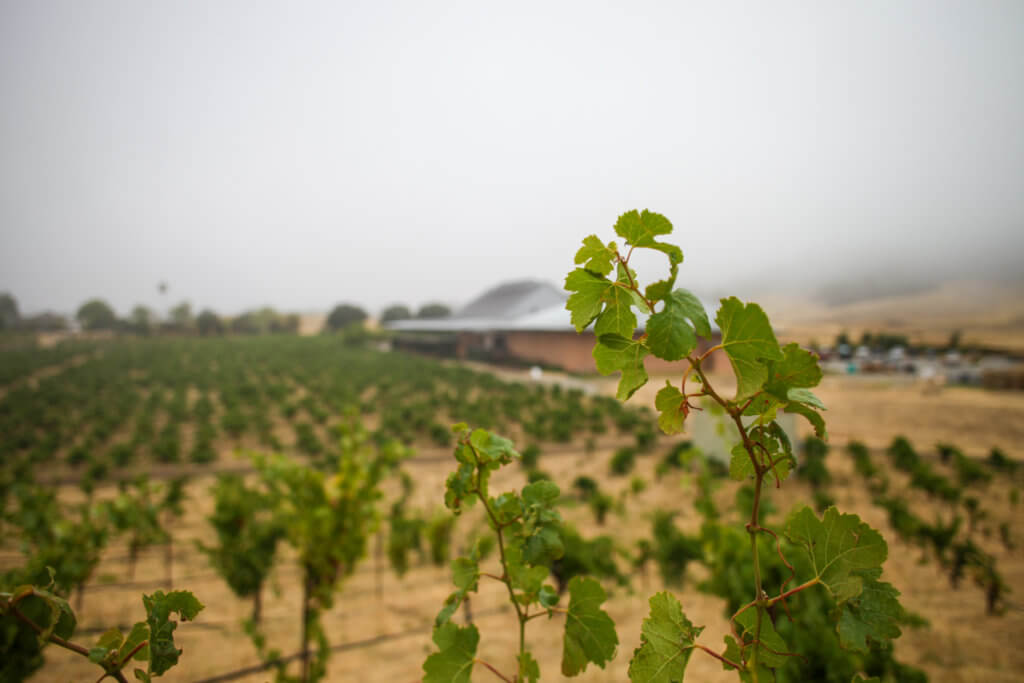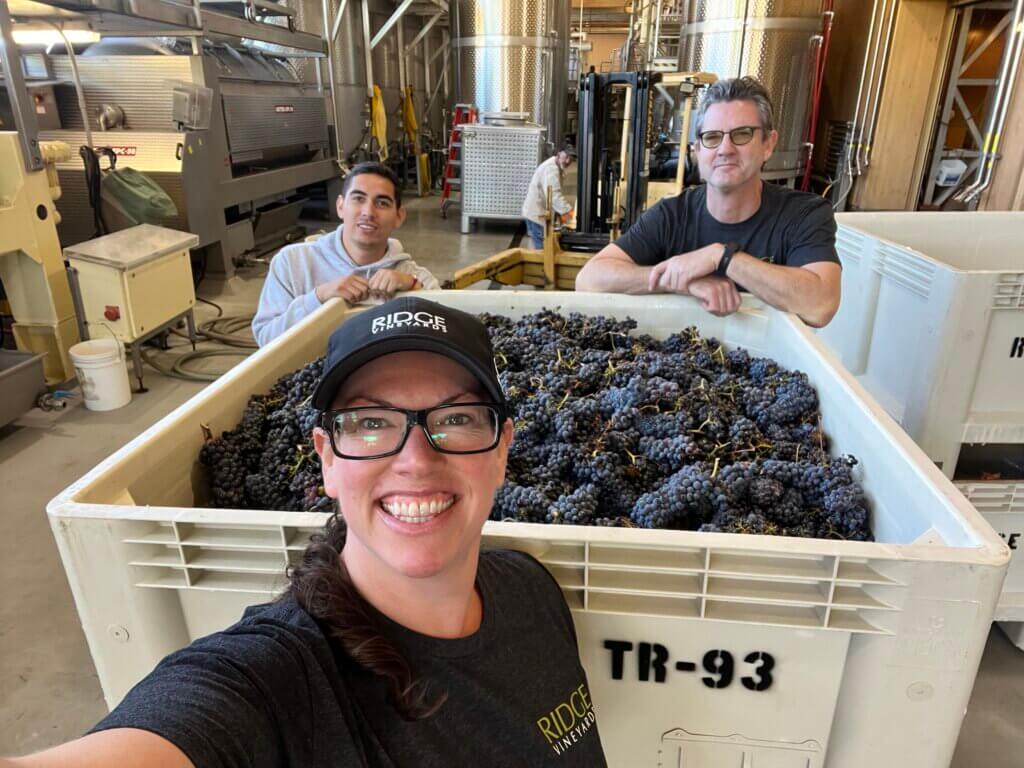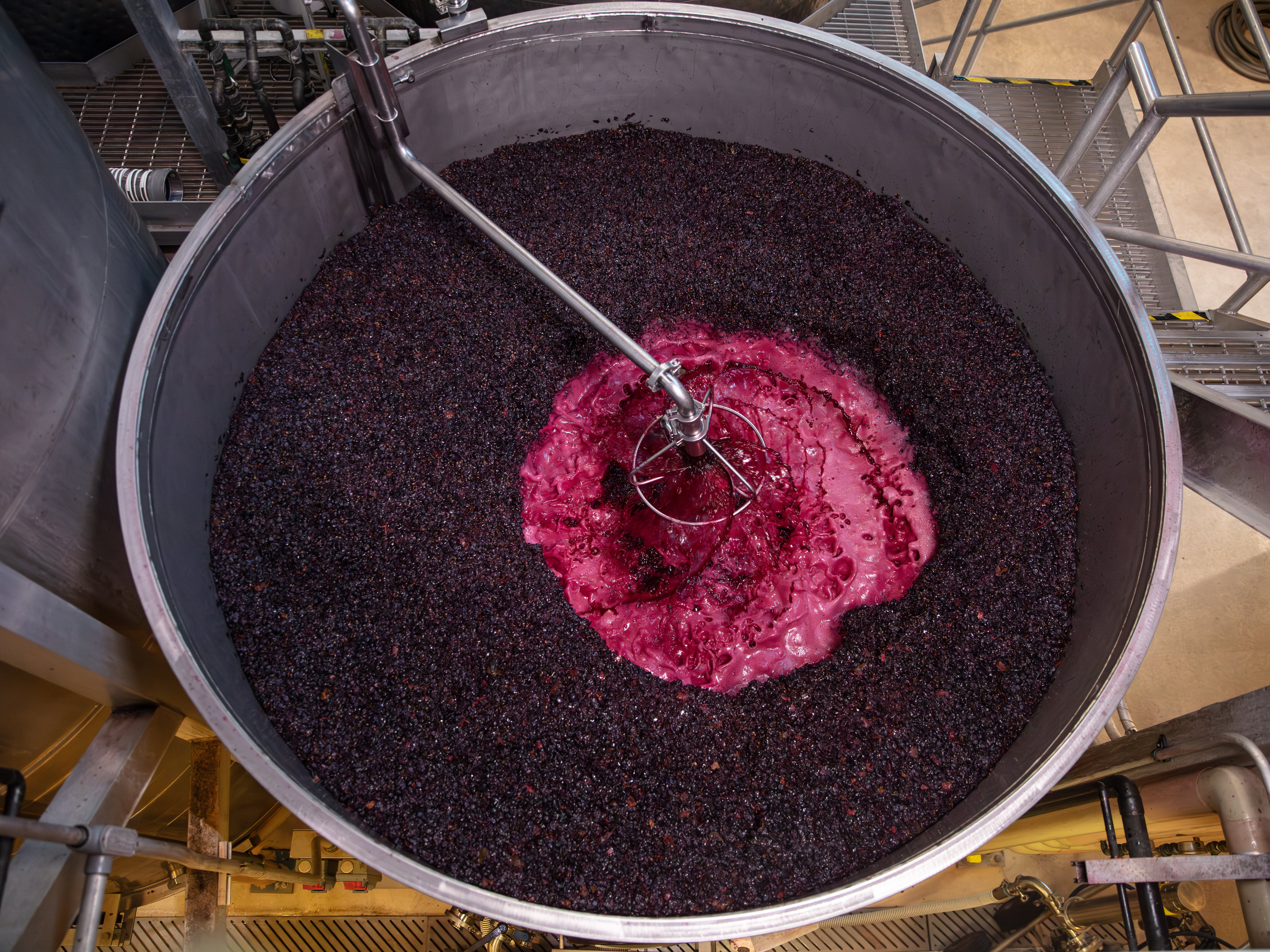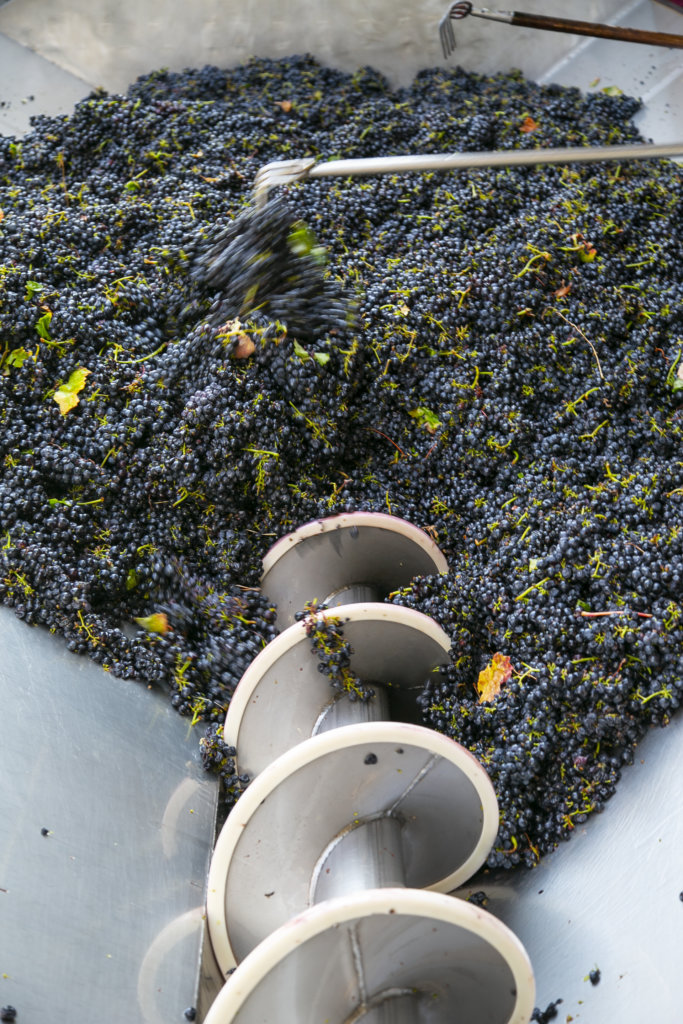2024 Harvest Report – Sonoma
Blog Post
January 2025
A second year of above-average rainfall replenished the vines in the winter. We experienced a very rainy January 2024 with nearly 25 inches of rain. This was similar to the beginning of the 2023 growing season, except 2024 was slightly warmer in temperature. You may recall February 2023 when it snowed in Sonoma County. The temperatures in 2024 were on average 5 degrees warmer than 2023.
This put budbreak back on a relatively “normal” schedule which occurred on March 19th, 2024, on Spring equinox. By the end of March, we received 43 inches of rain. Then the rainy season stopped, and ideal, mild growing weather appeared. Bloom happened between the middle and end of May.

In July, we saw the hottest week on record since the heat dome on September 5th, 2022. July 1st was 100, degrees followed by a week of 96-107 degrees. We saw sunburn on petite sirah and carignane, reducing crop load, but the zinfandel at that stage of growing is quite resilient, and it emerged unscathed. The rest of the summer was warm and consistent; optimal weather for growing high-quality grapes.
We kicked off harvest on August 21, 2024, with our Sandy Lane Carignane from Contra Costa. These vines are over 130 years old; they are own-rooted, head-trained and dry farmed. They are grown next to the Sacramento River Delta, in white beach sand called Delhi sandy loam. The roots go down as far as 40-50 feet where they find enough water to thrive. This vineyard expresses the concept of “terroir,” which happens when the right variety is planted in the right place.
Harvest held a steady pace over the six-week duration. The day after our Sandy Lane Carignane, we started picking rosé blocks from our Estate vineyard.
Counoise and cinsaut from House Hill at Lytton East were ready first. The way we make our rosé is a bit different than how many wineries make rosé. Instead of making the rosé from one lot of grapes, we do 5-6 picks in order of ripeness to utilize the natural acidity present in the grapes at lower brix. The counoise and cinsaut were picked around 20 brix, which is low in sugar content, and would give a very low finished alcohol. This pick represents our bright acid component. The next pick was zinfandel at 22 brix to capture the stone fruit components that zinfandel expresses at this level of ripeness. This pick also contributes natural acidity to the final wine. We allow the grenache to get the ripest, about 23.5 brix. This pattern of picking makes a wine layered with expressive fruit, mineral and savory notes from varying ripeness levels.
We had the pleasure of working with two famous old vineyards that are new to us, when they became available this year. Quite coveted and generally unattainable, the Papera Vineyard and Belloni Vineyard are both located near Piner and Olivet Lane. Vineyards of this caliber usually remain under multi-year contracts with wineries, but this year both became available, and we jumped at the opportunity. The cooler climate of the lower Russian River area allows the fruit to stay on the vine longer and develop flavor, while keeping the acidity needed to make an ageable wine. Look for these gems when they are bottled in 2026.



2024 was a “flavor year.” This happens when we have a confluence of favorable factors including ample winter rainfall, enough sunshine to slowly and consistently ripen the grapes, good diurnal swing (cold nights, warm days), and varietals that ripen at different times to allow us to pick at optimal ripeness.
We finished harvest with Alder Springs, our northernmost vineyard located in Laytonville, in Mendocino County. This site is 12 miles from the ocean surrounded by towering redwood trees with an altitude ranging from 1700-2700 feet. The young vine plantings of falanghina and vermentino are parcel mates. This vineyard has some unique challenges given these factors, but this year, bears showed up too.
Stuart, the grower at Alder Springs noticed that some sort of wildlife was eating his grapes, but he couldn’t understand how they were eating so much. His son went out at night with night vision goggles and, from a safe distance, observed a family of 40+ bears feasting on certain varieties. Apparently, bears have a penchant for vermentino and grenache, too, I’m told. The bears ate most of our vermentino, which means that our 2024 Alder Springs is dominantly falanghina, with about 20% vermentino.
It is a lovely blend and a great reminder that nature is always in charge. We can set our intentions to make a certain wine with a specific varietal breakdown, but mother nature will always deliver what we are meant to make. It’s up to us to listen to her sage advice.
—Shauna Rosenblum, Winemaker, Lytton Springs
Wait!
In order to qualify for user related discounts, you must log in before proceeding with checkout. Click the button below to log in and receive these benefits, or close the window to continue.
Log In